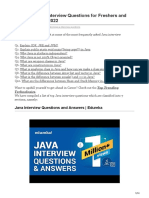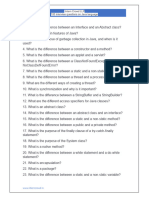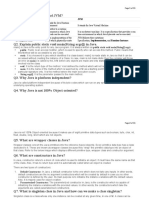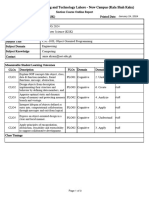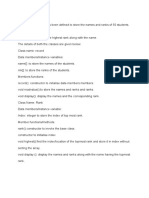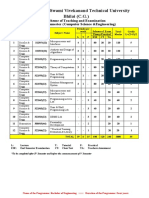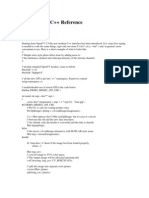0% found this document useful (0 votes)
10 views4 pagesJava 51 Interview Questions
The document contains 51 Java interview questions along with brief answers covering fundamental concepts such as JVM, JRE, JDK, bytecode, access modifiers, object-oriented principles, exception handling, collections, multithreading, and Java 8 features. It also discusses advanced topics like lambda expressions, functional interfaces, and memory management. This resource serves as a quick reference for candidates preparing for Java interviews.
Uploaded by
sagargadekar323Copyright
© © All Rights Reserved
We take content rights seriously. If you suspect this is your content, claim it here.
Available Formats
Download as PDF, TXT or read online on Scribd
0% found this document useful (0 votes)
10 views4 pagesJava 51 Interview Questions
The document contains 51 Java interview questions along with brief answers covering fundamental concepts such as JVM, JRE, JDK, bytecode, access modifiers, object-oriented principles, exception handling, collections, multithreading, and Java 8 features. It also discusses advanced topics like lambda expressions, functional interfaces, and memory management. This resource serves as a quick reference for candidates preparing for Java interviews.
Uploaded by
sagargadekar323Copyright
© © All Rights Reserved
We take content rights seriously. If you suspect this is your content, claim it here.
Available Formats
Download as PDF, TXT or read online on Scribd
/ 4























